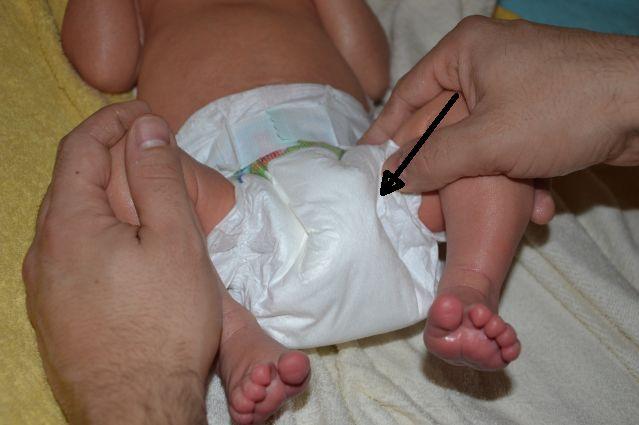|
Prevention of contractions of hip joints in persons with DDH
Rehabilitation practice, Dr M. Matyja, Sosnowiec, Poland
Racławicka 23, phone no. +48 501 540 201
e-mail address: Ten adres pocztowy jest chroniony przed spamowaniem. Aby go zobaczyć, konieczne jest włączenie w przeglądarce obsługi JavaScript. This e-mail address is being protected from spambots. You need JavaScript enabled to view it
M. Sc. Sebastian Sroczyński, certified NDT-Bobath therapist
Contractions of thigh adductor muscles constitute a particularly tough issue in case of need to use orthopaedic equipment. When we are dealing with contractions of the hip joint, the baby is distressed, it cries, because it experiences visible discomfort.
Prevention of contractions of hip joints is taken care of in Sosnowiec, Poland, at the rehabilitation practice of Dr M. Matyja.
Neurodevelopment therapy techniques according to the NDT-Bobath concept are applied for this purpose, aiming to reduce the tension of the contracted muscles, as well as fascial techniques to relax the muscles.
The elimination of contractions of the hip joint is an indispensable condition of effective and quick treatment of hip joint dysplasia.
Short description of the therapy:

Here we see photographs showing one of the techniques of the neurodevelopmental therapy according to the NDT-Bobath method, called dissociation. In this case the part undergoing therapy is the left hip.
1. We grab the hip so that the patient's knee rests on our palm, and the fingers should hold the thigh and be positioned parallel to the direction of the femur.
2. We execute the dissociation, or a slight movement in axial direction towards the hip joint (a push), and release (not drag it back!). This motion should be rhythmical and done at a constant pace (three pushes per second), while at the same time we should abduct the contracted hip to the point of resistance from the hip, after which we return to the intermediate position, and repeat the same cycle. The entire cycle should be executed until the hip reaches a threshold which one cannot cross (the hip will not allow for more).

.
Here we also have shown fascial techniques. The difference is another technique to keep.

Here a fascial technique is applied to the adductor muscles.
1. Grab the patient's thigh with the hand gently, so as to feel the taut muscle.
2. Execute slight supination, but not of the thigh! We are working here with the muscle fasciae, thus the rotation takes place only on the level of the muscle fasciae.
3. Gently stretch the fascia of the adductor muscle specifically through rotation, and hold for several seconds. After that, release the rotation, and repeat the same, but adding thighsupination this time.
4. Repeat entire exercise until we see that the supination is not progressing further, or when we reach full supination.

The final technique. It entails stretching the adductor muscles.
1. Supinate the patient's thigh so that we distinctly feel the adductor muscle taut.
2. Gently press with the thumb (pushing the code) this muscle on the side in the direction of supination.
3. Hold for several seconds; if the child protests, for a shorter period.
4. Release and repeat after a few seconds.
5. Execute approximately 10 repetitions.
The entire therapy takes approx. 20 minutes. Observations show that the minimum number of treatments before the application of orthopaedic equipment is three sessions, 20 minutes each, over the course of a week.
In addition, the parents receive advice on caring for the child, to support the therapy. This is even more important, because even if one applies the best possible therapy, the lack ofproper care at home will render the work of the therapist useless, and will hinder reaching the ultimate goal of eliminating the contractions as much as possible before usingorthopaedic equipment.
|